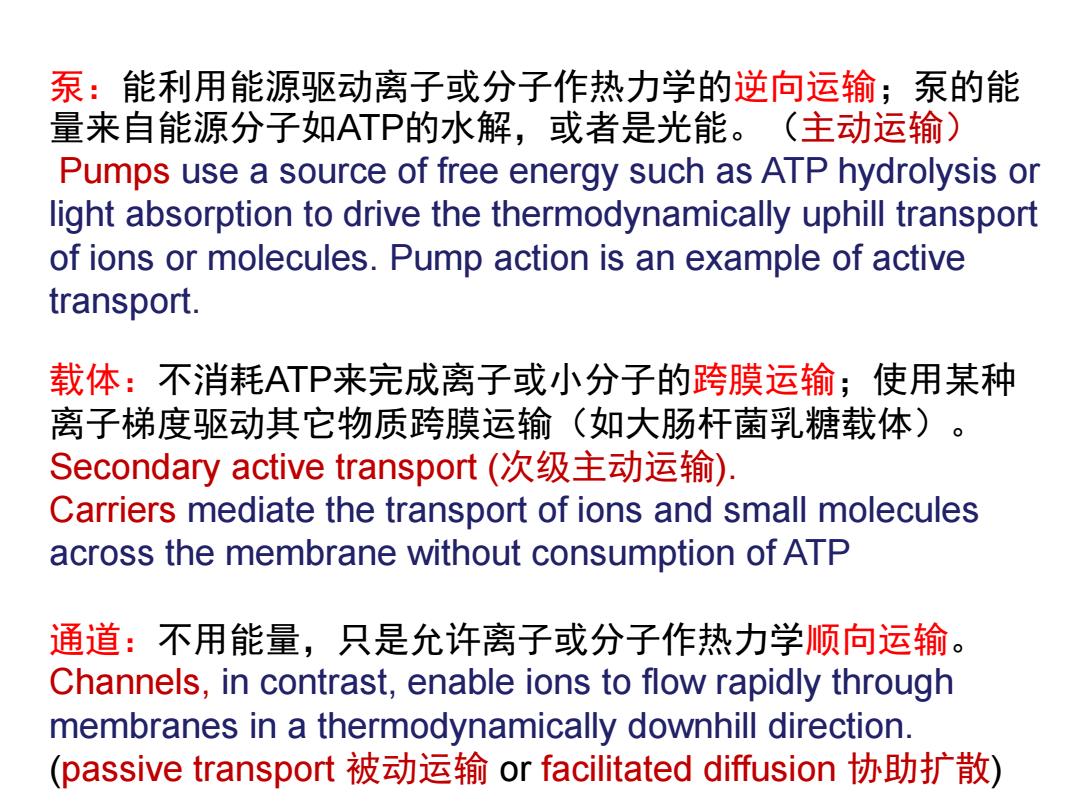正在加载图片...

泵:能利用能源驱动离子或分子作热力学的逆向运输;泵的能 量来自能源分子如ATP的水解,或者是光能。(主动运输) Pumps use a source of free energy such as ATP hydrolysis or light absorption to drive the thermodynamically uphill transport of ions or molecules.Pump action is an example of active transport. 载体:不消耗ATP来完成离子或小分子的跨膜运输;使用某种 离子梯度驱动其它物质跨膜运输(如大肠杆菌乳糖载体) Secondary active transport(次级主动运输). Carriers mediate the transport of ions and small molecules across the membrane without consumption of ATP 通道:不用能量,只是允许离子或分子作热力学顺向运输。 Channels,in contrast,enable ions to flow rapidly through membranes in a thermodynamically downhill direction. (passive transport被动运输or facilitated diffusion协助扩散)泵:能利用能源驱动离子或分子作热力学的逆向运输;泵的能 量来自能源分子如ATP的水解,或者是光能。(主动运输) Pumps use a source of free energy such as ATP hydrolysis or light absorption to drive the thermodynamically uphill transport of ions or molecules. Pump action is an example of active transport. 载体:不消耗ATP来完成离子或小分子的跨膜运输;使用某种 离子梯度驱动其它物质跨膜运输(如大肠杆菌乳糖载体)。 Secondary active transport (次级主动运输). Carriers mediate the transport of ions and small molecules across the membrane without consumption of ATP 通道:不用能量,只是允许离子或分子作热力学顺向运输。 Channels, in contrast, enable ions to flow rapidly through membranes in a thermodynamically downhill direction. (passive transport 被动运输 or facilitated diffusion 协助扩散)